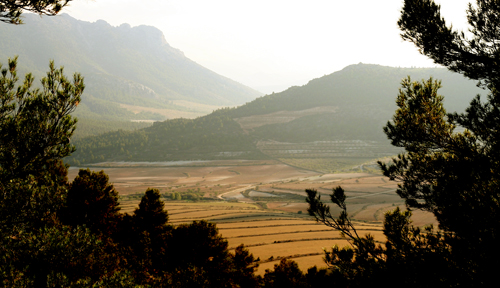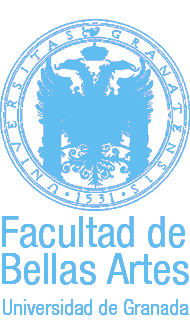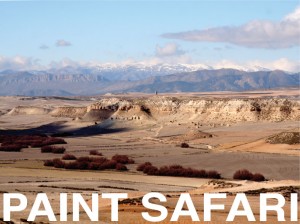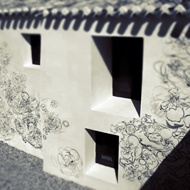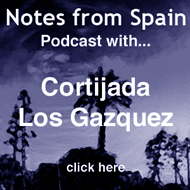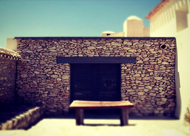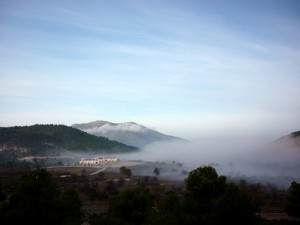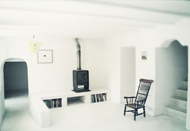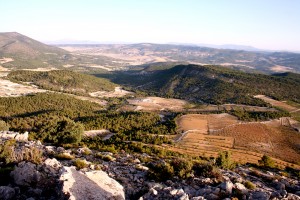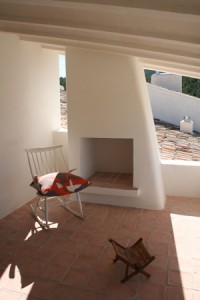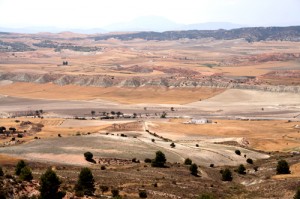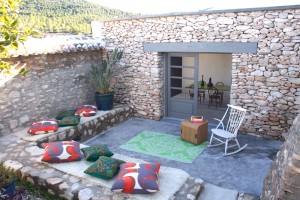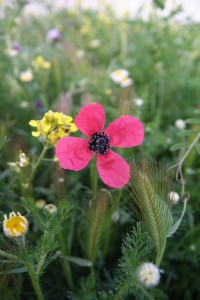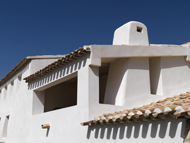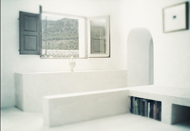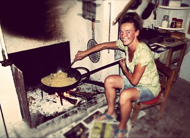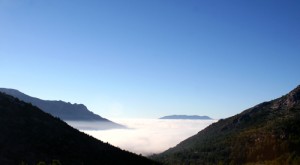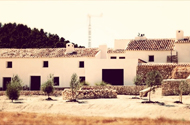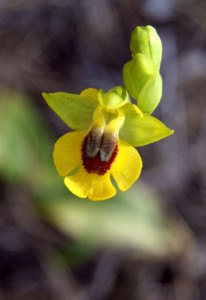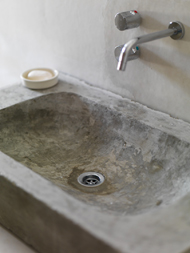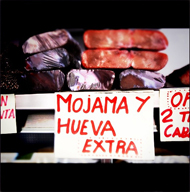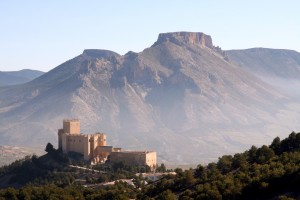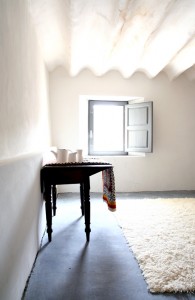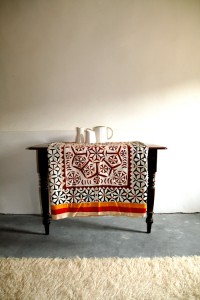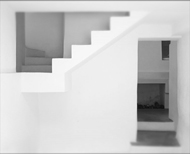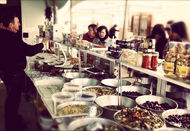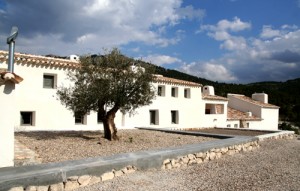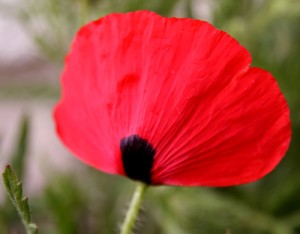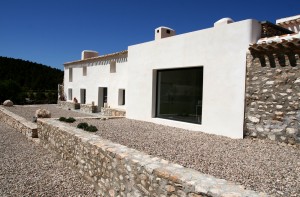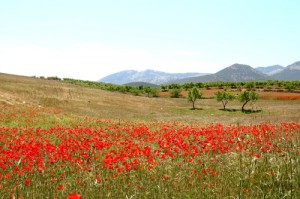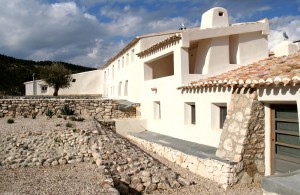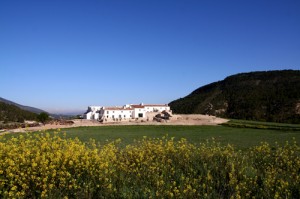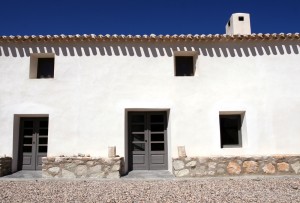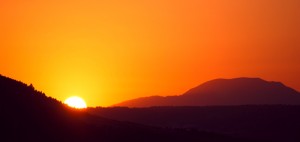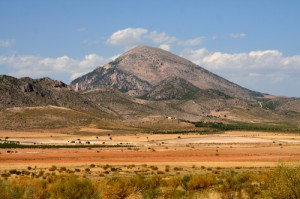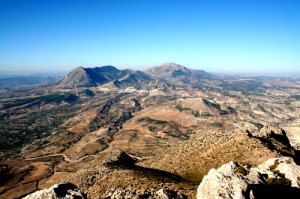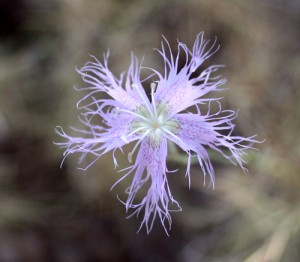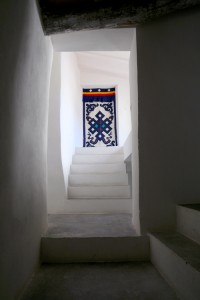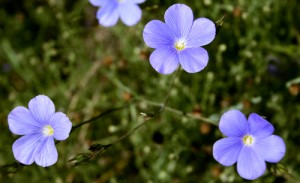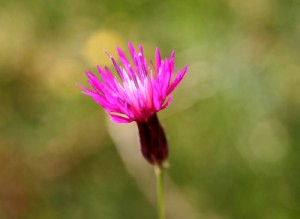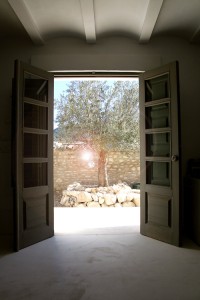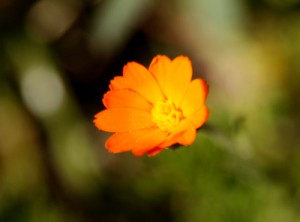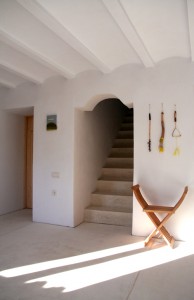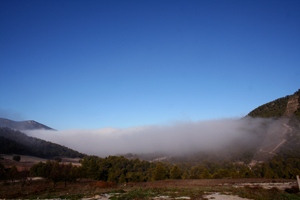Creative Course ‘En Plein Air’ 1 - making paint
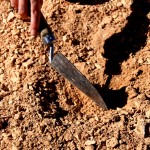 This last week’s creative course at Los Gázquez ‘En Plein Air’ has been very much about being outside. The weather has been absolutely fantastic. Warm and without a breeze. Not a cloud in the sky and the sun quite low on the horizon making for fantastically dramatic shadow formations.
This last week’s creative course at Los Gázquez ‘En Plein Air’ has been very much about being outside. The weather has been absolutely fantastic. Warm and without a breeze. Not a cloud in the sky and the sun quite low on the horizon making for fantastically dramatic shadow formations.
We thought we should kick the week off by making paint. Not to be thrifty mind, but remind, or just make people aware, of where colour comes from. For example, take yourself to Italy, to Umbria or Siena, walk into a field and scoop up the earth from beneath your feet and surprise surprise, it is Raw Umber or Raw Siena. Toast that earth a little and you will have Burnt Umber and Burnt Siena.
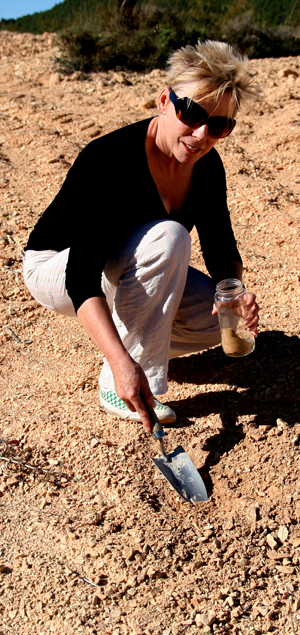 The same principle operates all over the globe. With early Italian painting it is possible to locate the origin of a given painting by the colours employed in it’s creation. When you look, for example, at a painting by Sassetta di Siena, a very early and conventionally primitive painter, it is amazing how exact the colours are to the original. This is because those very colours which occur naturally in the landscape are employed to make the paint for the paintings made to represent the landscape.
The same principle operates all over the globe. With early Italian painting it is possible to locate the origin of a given painting by the colours employed in it’s creation. When you look, for example, at a painting by Sassetta di Siena, a very early and conventionally primitive painter, it is amazing how exact the colours are to the original. This is because those very colours which occur naturally in the landscape are employed to make the paint for the paintings made to represent the landscape.
This is guest Andrea on a collecting mission. We managed to find at least eight distinctly different earth colours from La Hoya de Carrascal alone. The trick is to find a fine grained patch of earth, free of organic material such as leaf litter or plant roots. This material is then put through a riddle to take out any stones that are too big. Next it is placed in a mortar and pestle to be ground down into a fine powder. At this point, if you should so choose, you can blend your pigment with others you have collected or with bought non organic mineral powders. The binding agent we used is Gum Arabic, similar to what you would find in a water colour tube. It can be made into a paste similar in consistency to mayonnaise, the whiter the mineral the more chalk is in the mix and the more opaque is the paint.
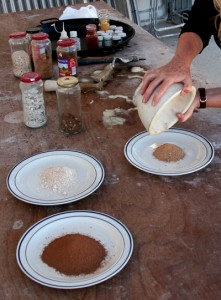 Joya resident artist, sculptor Gordon Senior, used a similar technique for modeling some small objects. Except within his work he used a small amount of cement as a binding agent. Obviously cement wont bind to paper but it will bind materials of the same quality to each other as long as it is mixed with those compounds.
Joya resident artist, sculptor Gordon Senior, used a similar technique for modeling some small objects. Except within his work he used a small amount of cement as a binding agent. Obviously cement wont bind to paper but it will bind materials of the same quality to each other as long as it is mixed with those compounds.
For working on paper Gum Arabic is far superior for many reasons, not least because it is transparent. I would imagine one could use wood glue (PVA) just as easily if diluted.
The next stage was to apply our mix as a ground for painting our immediate landscape. Lo and behold the basic colour was exactly the same as the mountain to the north of the house. As in those painting by Sassetta we had reproduced the colour of the landscape from some of the constituent parts of that landscape.
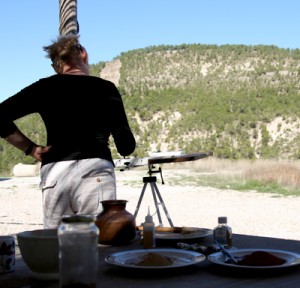 It’s quite clear what this teaches us. Paint is not an abstracted medium from which we try to render likeness, for example. Paint is (or was) of the earth.
It’s quite clear what this teaches us. Paint is not an abstracted medium from which we try to render likeness, for example. Paint is (or was) of the earth.
Our lesson is simplistic, and paint making either in the studio or factory, is an incredibly technical procedure. What our lesson does however is connect us to the source of our inspiration, which is so often the land.
It’s interesting to note that Pliny, in his Natural Histories, described the manufacture of Lead White in a manner more or less exactly the same as in production today. But Pliny goes on to describe the manufacture of a colour called Dragon’s Blood. It is made when a dragon and an elephant are locked together in mutually mortal combat. The coils of the dragon strangle the elephant and the elephant’s weight crushes the dragon. The conglomerating blood is apparently the only colour which can faithfully reproduce the colour of blood in painting!
We have many pre-historic paintings in the caves in this area of Spain and they nearly all prepared colours in the same manner as we have done. I doubt though there were any dragons on hand too make the likeness of blood.

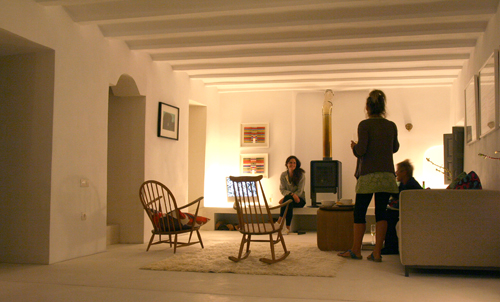
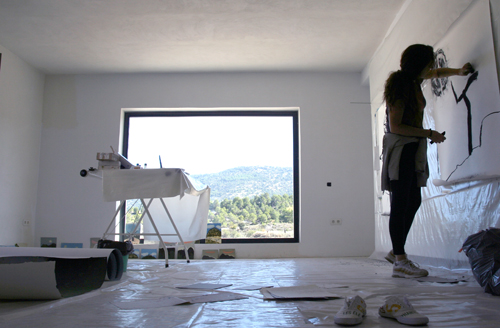
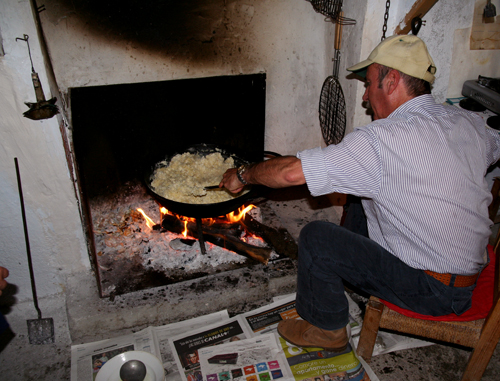 Today we were all invited to the nave, the old home in the country, of Tomas and Pepe for migas. It translates literally as crumbs but means much more. In a very hot frying pan, a sarten, you mix flour with olive oil and water. Stir the mixture vigorously and for a long time until it makes crumbs. To this add copious whole cloves of garlic, sausages, pork and liver.
Today we were all invited to the nave, the old home in the country, of Tomas and Pepe for migas. It translates literally as crumbs but means much more. In a very hot frying pan, a sarten, you mix flour with olive oil and water. Stir the mixture vigorously and for a long time until it makes crumbs. To this add copious whole cloves of garlic, sausages, pork and liver.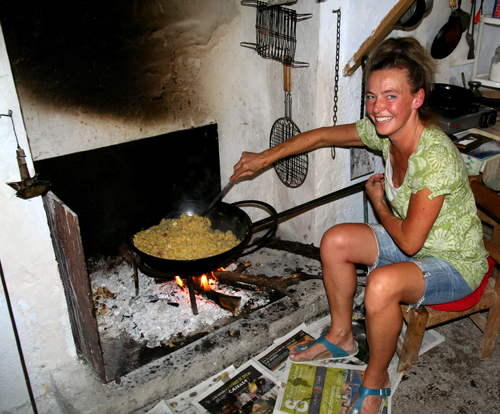
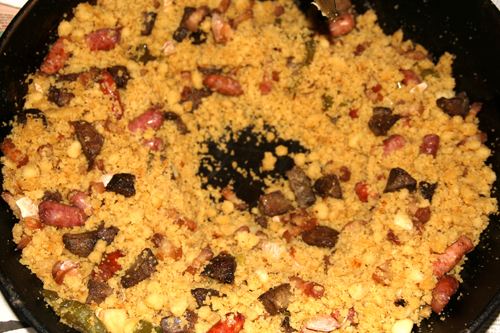
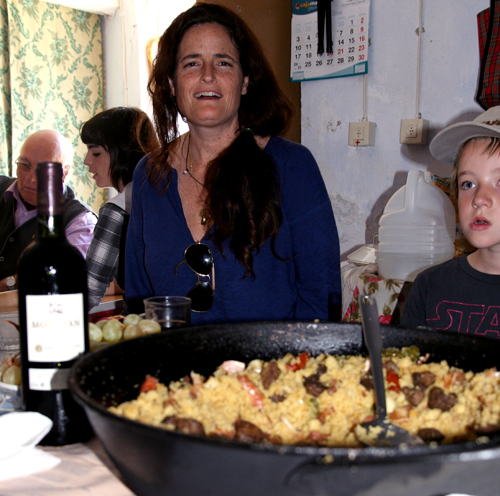
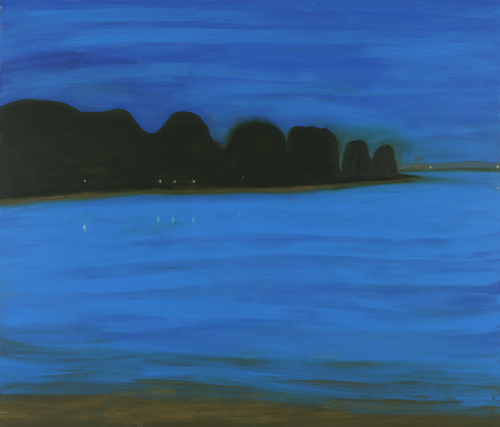
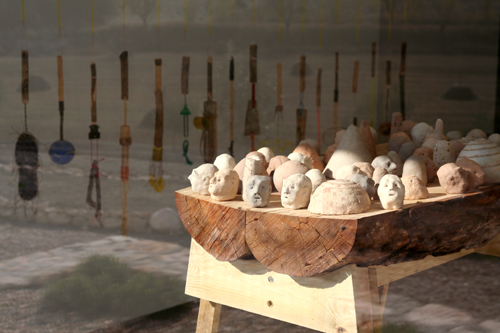
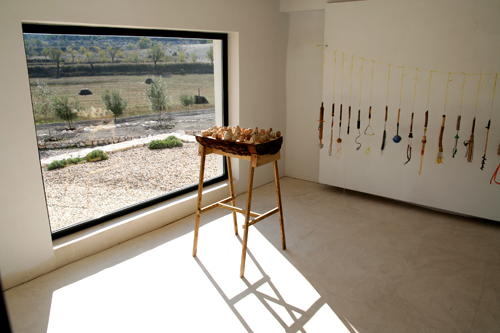
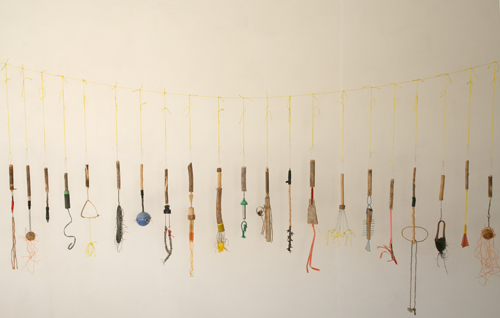
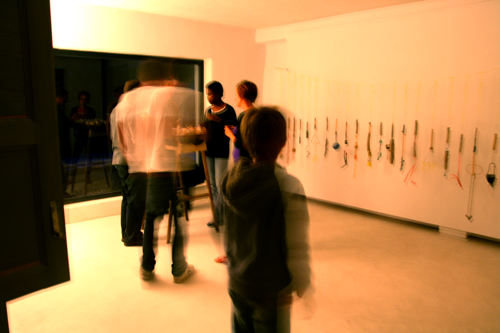
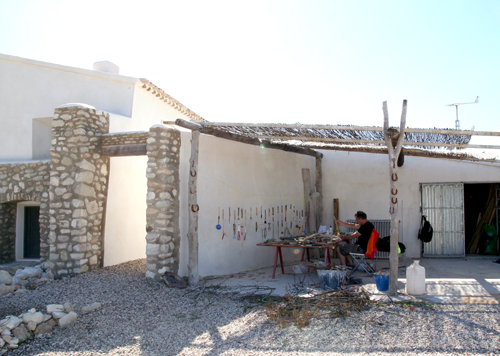
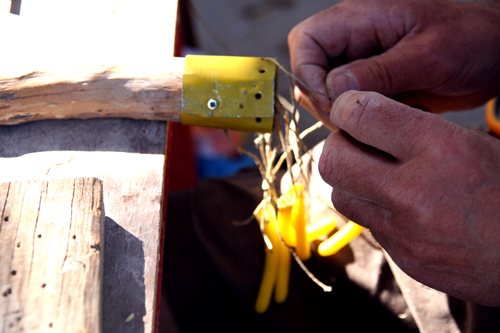
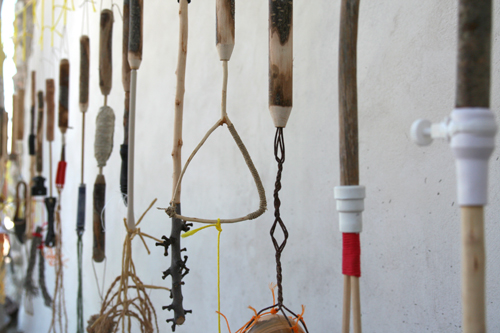
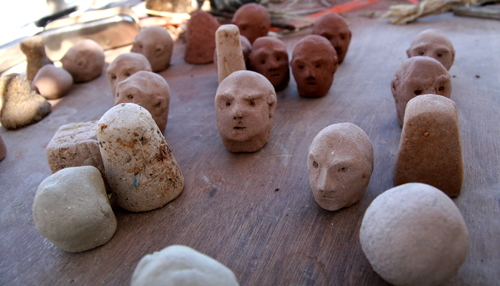
 Here at
Here at 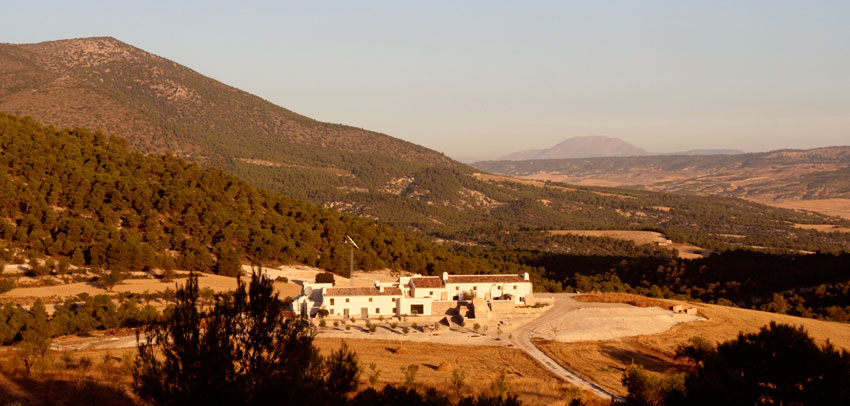
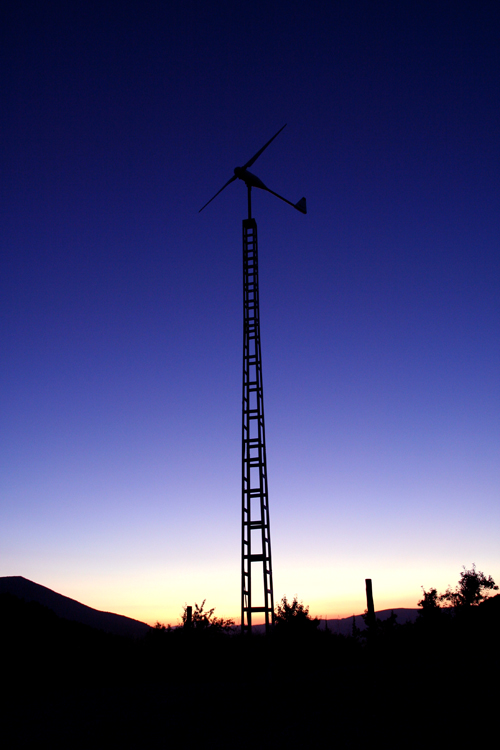 To create electricity we use the sun and the wind. We have a photo voltaic panel and a wind turbine which more than sufficiently powers the house. We don’t have to run around switching off lights or turning off the TV!
To create electricity we use the sun and the wind. We have a photo voltaic panel and a wind turbine which more than sufficiently powers the house. We don’t have to run around switching off lights or turning off the TV! We also have a solar panel to create hot water. On a good day, i.e with sunshine (which tends to be most days here) the solar panel can easily create 600 litres of hot water. On days when the sky is less clear it will create the first thirty degrees which reduces your need to burn fuel.
We also have a solar panel to create hot water. On a good day, i.e with sunshine (which tends to be most days here) the solar panel can easily create 600 litres of hot water. On days when the sky is less clear it will create the first thirty degrees which reduces your need to burn fuel.

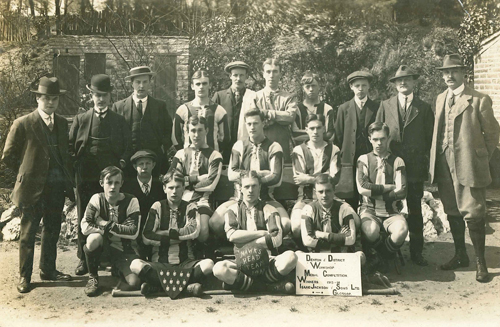
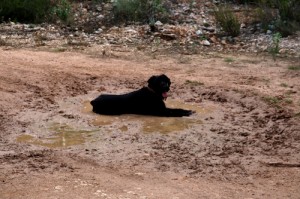
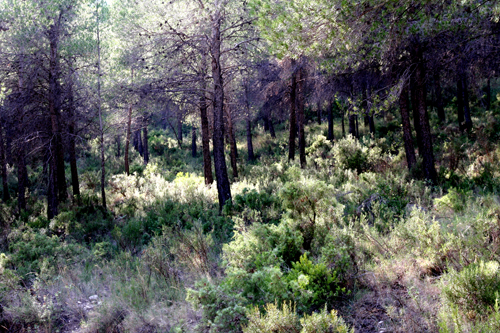
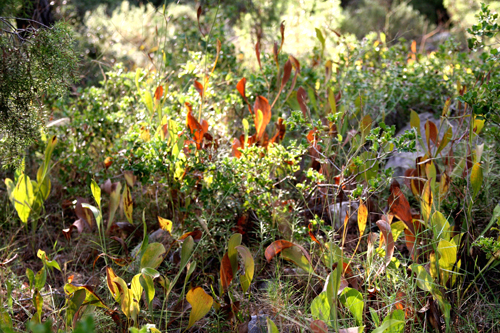
 From here the walk is to the west with this view perpetually in sight. The air is silent except for the smarting call of choughs on the cliff face or the little, distant trampling of cloven hooves belonging to the ibex. To the south is La Hoya de Taibena it’s fields of stubble and terraces of almond. It’s one of those walks, especially with good company, that is good exercise for the soul as well as the legs.
From here the walk is to the west with this view perpetually in sight. The air is silent except for the smarting call of choughs on the cliff face or the little, distant trampling of cloven hooves belonging to the ibex. To the south is La Hoya de Taibena it’s fields of stubble and terraces of almond. It’s one of those walks, especially with good company, that is good exercise for the soul as well as the legs.